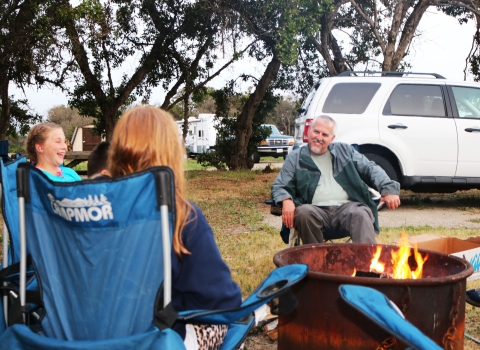The U.S. Fish and Wildlife Service proposes to list the northern long-eared bat as endangered under the Endangered Species Act. The Service also determined that the eastern small-footed bat does not warrant listing.
The northern long-eared bat is found across much of the eastern and north central United States, and all Canadian provinces from the Atlantic Ocean west to the southern Yukon Territory and eastern British Columbia.
The Service’s proposal opens a 60-day public comment period on the proposal to protect the northern long-eared bat as endangered. Over the next 12 months, the Service will evaluate information provided during the comment period to make a final decision on listing the species. The proposal appeared in the October 2, 2013, Federal Register.
The primary threat to the northern long-eared bat is a disease, white-nose syndrome, which has killed an estimated 5.5 million cave-hibernating bats in the Northeast, Southeast, Midwest and Canada. Populations of the northern long-eared bat in the Northeast have declined by 99 percent since symptoms of white-nose syndrome were first observed in 2006.
White-nose syndrome is a fungal disease known to cause high mortality in bats that hibernate in caves. The fungus causing the disease thrives in low temperatures and high humidity – conditions commonly found in caves and mines where northern long-eared bats hibernate. While the eastern small-footed bat also hibernates in caves and mines, it has not shown the drastic decline at winter hibernacula compared with that experienced by the northern long-eared bat. White-nose syndrome has spread rapidly throughout the East and is currently establishing a foothold in the Midwest. Although there is debate as to how fast white-nose syndrome may spread throughout the species’ range, current model predictions suggest it will likely spread throughout the United States.
Under the Endangered Species Act, an endangered plant or animal is one that is in danger of becoming extinct. If a final decision is made to list the northern long-eared bat, the species will be protected from take – harming, harassing, killing – and federal agencies will work to conserve the bat and its habitat as they fund, authorize or carry out activities. In addition, a recovery plan will be developed for the species.
The Service found that critical habitat– an identification of areas that are important to the conservation of the northern long-eared bat - is not determinable at this time. The Service will work to identify areas of critical habitat and develop a proposal within 12 months. 2
Before the emergence of white-nose syndrome, the northern long-eared bat was found in 39 states, including the District of Columbia, with higher abundance in the East and becoming increasingly rare moving west. Other threats to the species include wind energy development, habitat destruction or disturbance to hibernating and summer habitat, climate change climate change
Climate change includes both global warming driven by human-induced emissions of greenhouse gases and the resulting large-scale shifts in weather patterns. Though there have been previous periods of climatic change, since the mid-20th century humans have had an unprecedented impact on Earth's climate system and caused change on a global scale.
Learn more about climate change , and contaminants. The Service is working with the wind energy industry to address impacts to imperiled bats.
The Service received a petition from the Center for Biological Diversity and WildEarth Guardians in 2010 to list the eastern small-footed bat and the northern long-eared bat under the Endangered Species Act. In 2011, we made a preliminary finding that the petitions warranted further review. Today’s action is a 12-month finding on the petition, and a proposal to list the northern long-eared bat based on information gathered over the past two years. The Service is looking for comments on the proposal to list the northern long-eared bat. You may submit comments by one of the following methods; comments must be received by December 2, 2013.
(1)Electronically at http://www.regulations.gov . In the Keyword box, enter Docket No. FWS– R5–ES–2011–0024, which is the docket number for the rulemaking. Then, in the Search panel on the left side of the screen, under the Document Type heading, click on the Proposed Rules link to locate this document. You may submit a comment by clicking on “Send a Comment or Submission.” If your comments will fit in the provided comment box, please use this feature of http://www.regulations.gov, as it is most compatible with our comment review procedures. If you attach your comments as a separate document, our preferred file format is Microsoft Word. If you attach multiple comments (such as form letters), our preferred format is a spreadsheet in Microsoft Excel; or
(2) By hard copy: Submit by U.S. mail or hand-delivery to: Public Comments Processing, Attn: FWS–R5–ES–2011–0024; Division of Policy and Directives Management; U.S. Fish and Wildlife Service; 4401 N. Fairfax Drive, MS 2042–PDM; Arlington, VA 22203.
The Service requests that you send comments only by the methods described above. The Service will post all information received on http://www.regulations.gov. This generally means that the Service will post any personal information you provide. Comments submitted electronically using the Federal eRulemaking Portal must be received by 11:59 p.m. Eastern Time on December 2, 2013.
For more information on the proposal to list the northern long-eared bat, the petition finding for the eastern small-footed bat, and other endangered species information, go to http://www.fws.gov/midwest/endangered/mammals/nlba/index.html
For more information about white-nose syndrome visit www.whitenosesyndrome.org
Connect with our Facebook page at facebook.com/usfwsmidwest, follow our tweets at twitter.com/usfwsmidwest, watch our YouTube Channel at youtube.com/usfws and download photos from our Flickr page at flickr.com/photos/usfwsmidwest.



